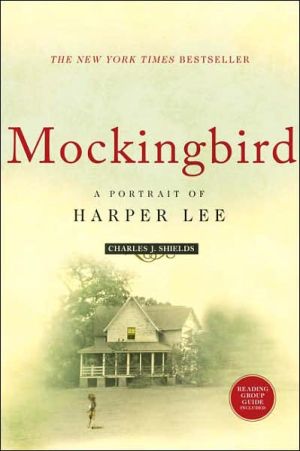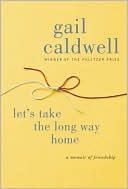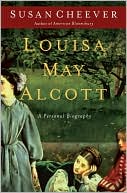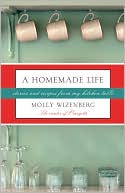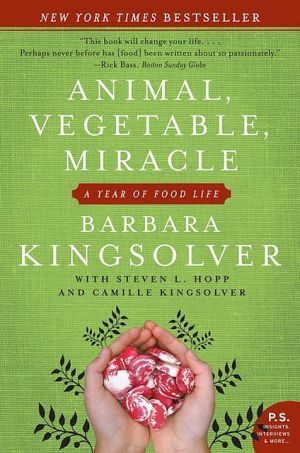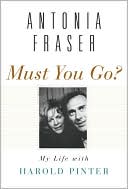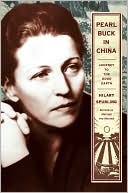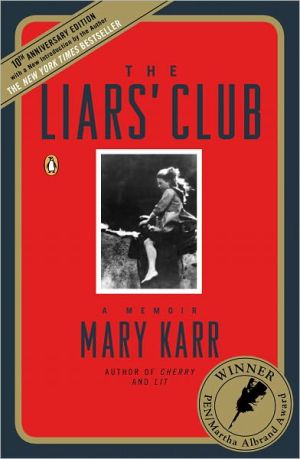Mockingbird: A Portrait of Harper Lee
"A fine, well-rounded portrait of Harper Lee. Mockingbird is good reading."—Star-Tribune (Minneapolis)\ To Kill a Mockingbird—the twentieth century's most widely read American novel—has sold thirty million copies and still sells a million yearly. Yet despite her book's perennial popularity, its creator, Harper Lee, has become a somewhat mysterious figure. Now, after years of research, Charles J. Shields brings to life the warmhearted, high-spirited, and occasionally hardheaded woman who gave...
Search in google:
Biography of Harper Lee, author of To Kill a Mockingbird. The New York Times - Garrison Keillor Charles Shields is a former English teacher who taught Harper Lee's book, and a scrupulous journalist who respects the lady's privacy even as he opens up her life. This biography will not disappoint those who loved the novel and the feisty, independent, fiercely loyal Scout, in whom Harper Lee put so much of herself.
\ Introduction\ "As a reader I loathe Introductions," Nelle Harper Lee once wrote. But, with apologies to the subject, I must say that one is necessary for this book, the first ever about the woman who gave the world To Kill a Mockingbird, one of the most influential pieces of fiction produced in the United States. In a "Survey of Lifetime Reading Habits" conducted by the Book-of-the-Month Club in 1991, researchers found that To Kill a Mockingbird ranked second only to the Bible "as making a difference in people's lives." Forty-six years after its publication, the novel still draws almost a million readers annually. Maybe that is because its lessons of human dignity and respect for others remain fundamental and universal.\ This book aims to capture a life but is not a conventional biography, because--despite her novel's huge impact--Lee's writing life has been brief, and her personal life has been intensely private. She wrote only one book, her Pulitzer Prize-winning perennial bestseller, and then, after a brief moment in the spotlight, disappeared from the public eye. She has not sought fame, then or since, although around the time of To Kill a Mockingbird's publication she did grant interviews.\ Unlike her lifelong friend Truman Capote (perhaps even because of his example and experience), Harper Lee has never appeared comfortable in the limelight. In fact, not only does she not solicit attention, she also actively discourages it, refusing to speak in public and turning down all requests for interviews and all forms of cooperation with writers and reporters. In our era of relentless and often prurient self-exposure by some approval-hungry personalities, Lee prefers silence and self-respect. That is not to say she is furtively reclusive; though she enjoys her solitude, she is not some modern-day Emily Dickinson. She lives a normal life, replete with community activities, many related to her church. Lee is "like someone you'd meet in any small town," as Professor William Smart of Sweet Briar College, in Virginia, expressed it. And Smart has known Lee for forty years.\ Consequently, this book has been produced without Lee's help, although I have repeatedly solicited it. She has declined with vigor, even to the extent of refusing to respond to my attempts to check facts by mail. Despite her desire for privacy, I believe it is important to record Lee's story while there are still a few people alive who were part of it and can remember. I have tried to balance her desire for privacy with the desire of her millions of readers who have long hoped for a respectful, informative view of this rarely seen writer.\ This book is based on six hundred interviews and other sorts of communication with Harper Lee's friends, associates, and former classmates. It's also the product of four years of research into the papers of her friend Truman Capote, which include Lee's notes for his book In Cold Blood (for which she served as research assistant); the papers of Lee's literary agent; the archives of national and local libraries; and hundreds of newspaper and magazine articles. Until the mid-1960s, Lee was generous about granting interviews. I had to "put on my reporter's hat," as my late father, a journalist, liked to say, in order to trace this life, and I have tried to be as careful and as scrupulous as possible. I have sometimes made the decision to overlook topics that may have interested some, rather than to rely on psychologizing that I am not qualified to do or to risk producing errors that might find their way into future accounts of Lee.\ I want readers to be introduced to the author and get a sense of what makes her tick: the things that influenced her when she was growing up during the Depression in Monroeville, Alabama, for example; the reasons why classmates regarded her with awe; the traits of nonconformity and almost ferocious independence that distinguished her in college; the steps that led to her dropping out of law school and moving to New York to write; the sense of loyalty that drew her to Truman Capote's side when he was researching his "nonfiction novel," In Cold Blood; the sense of humor that sustained her while she was scrutinized by the media because of the success of To Kill a Mockingbird and the film based on it; and, finally, the reasons why she never wrote another novel.\ As I was researching this book, I tended to be asked the same questions by interested friends. The first was "Is Harper Lee still alive?" Yes. "Nail Har-puh," as her name is pronounced in her hometown, spends most of the year in Monroeville, and a few months in New York in the apartment she has maintained for the past forty-five years. Her eldest sister, Alice, ninety-four, who is one of the most highly regarded attorneys in Alabama, shares a house with Nelle in Monroeville. Residents are accustomed to seeing the two ladies puttering around the First United Methodist Church, where they have been members all their lives; at the country club where they enjoy the lunch buffet and the opportunity to see friends; and at various favorite diners around town. Nelle refuses to talk about To Kill a Mockingbird in social situations, and friends warn strangers not to bring it up. She has been known to leave the room if pestered about the novel.\ The second question I was asked was "Is she married?" The answer is no. That question was almost always followed by "Is she gay?" I do not necessarily make a connection between being unmarried and being gay. I cannot say if she is homosexual (she was friends with Capote and other openly gay people), heterosexual (she and her literary agent, Maurice Crain, were devoted to each other), or just not open to long-term romantic relationships. I do know, on the other hand, of her ability to charm others and cultivate friends--though she also has a temper, and as a child, had a reputation for bullying. I am not sure what labels Lee would apply to herself, except "woman," "Southerner," and perhaps "writer."\ The final question I was continually asked was "Why didn't she write another novel?" This was the big question I had asked myself in the first place, and which led to the adventure of writing this book. After reading it, I hope you will come away with at least some idea of why she never published another novel after To Kill a Mockingbird.\ Years ago, when I was an English teacher in a large high school near Chicago, I taught To Kill a Mockingbird to freshmen. That's a good time to be introduced to it, because students at that age are crossing the bridge from childhood to young adulthood, as the young characters in Lee's novel are. In-class discussions of the novel tend to be lively, and assigned essays are weighty with insights and opinions. It's a very rich text to teach.\ If you don't remember much about the novel, here's a summary:\ To Kill a Mockingbird is really two stories. One is a coming-of-age tale told from the point of view of Scout Finch, a girl of about nine, and her slightly older brother, Jem. The second story concerns their father, attorney Atticus Finch, who has been appointed to defend a black man, Tom Robinson, falsely accused of raping a white woman.\ There are also two broad themes: tolerance and justice. The first is treated through the children's interactions with Arthur "Boo" Radley, their mysterious and maligned neighbor; the second is illustrated by Atticus's courageous moral stance in defending Tom Robinson to the best of his ability, despite the racial prejudices of the town. Tying the themes together is a homespun piece of advice that Atticus gives Scout: "If you just learn a single trick, Scout, you'll get along a lot better with all kinds of folks. You never really understand a person until you consider things from his point of view. . . . Until you climb inside of his skin and walk around in it." This appeal to recognize the humanity in everyone is practicable in normal day-to-day relations with people, even those we dislike, and, as Atticus powerfully demonstrates, in courtrooms where juries must sit in judgment of their fellow men and women.\ The plot of the coming-of-age story revolves around Boo Radley, who is rumored to be a kind of monster living in a shuttered house down the street from the Finches. Scout, Jem, and their next-door neighbor Dill Harris engage in pranks to make Boo show himself. Unexpectedly, however, Boo responds to their interest by reciprocating with small acts of kindness and consideration. They come to feel affectionate about their unseen friend.\ The Tom Robinson plot is fairly straightforward. As a black man, Tom doesn't have a ghost of chance of being acquitted of raping a white woman, and Atticus knows he will lose the case. Still, the attorney faces up to the challenge, even stepping between a lynch mob and his client, though racist taunts are directed at Atticus's children.\ The two plots intersect on a Halloween night not long after the trial is concluded. The drunken father of the girl Tom was accused of having raped ambushes the Finch children because Atticus exposed his ignorance and vices during the trial. He intends to kill the children, but they are saved by the angelic intervention of Boo Radley. Atticus is persuaded by the sheriff not to involve Radley in a homicide case (the children's attacker was killed during the struggle), because it would be cruel, he argues, to subject a pathologically shy man to a sensational trial that would, in any case, end in his acquittal. Atticus is unsure of the moral implications until Scout likens the choice to something her father once said: it's a sin to kill a mockingbird "because mockingbirds don't do anything but make music for us to enjoy." Scout escorts Radley back to his home and safety.\ In the late 1990s, I left the teaching field to write biographies and histories for young adults. Historical and cultural figures such as Gandhi, Captain Cook, novelist Amy Tan, and filmmaker George Lucas were relatively easy to write about because of the wealth of information available about them. So, as a challenge, I started casting around for someone worthy of an adult book, but about whom not much was known. My thoughts returned to Harper Lee.\ It was astonishing how little appeared about her in ordinary reference books. Encyclopedias carried two or three paragraphs, and often the facts were contradictory. She either had a law degree or she didn't (she doesn't); she either attended Oxford University for a year or for a semester (she attended only for a summer); she attended on a Fulbright scholarship (wrong and often repeated); her family is descended from General Robert E. Lee (fanciful, but not true).\ For almost a year I myself wondered if I had enough information to flesh out a full-length book. Lee's growing up in Monroeville was colorfully eccentric but unremarkable except for what she heard, read, saw, and thought about. Although her family was upper-middle-class, the impact of the Depression turned Monroeville into a narrow world. "We had to use our own devices in our play, for our entertainment," Lee said later. "We didn't have much money. Nobody had any money. We didn't have toys, nothing was done for us, so the result was that we lived in our imagination most of the time."\ Harper Lee and Truman Capote became friends as next-door neighbors in the late 1920s, when they were about kindergarten age. From the start they recognized in each other "an apartness," as Capote later expressed it; and both loved reading. When Lee's father gave them an old Underwood typewriter, they began writing original stories together. Capote moved to New York City in the third grade to join his mother and stepfather, but he returned to Monroeville most summers, rekindling his friendship with Lee.\ In high school she was fortunate to have a gifted English teacher, Gladys Watson-Burkett, who introduced her to challenging literature and to the rigors of writing well. Lee's preferred authors became nineteenth-century British writers, with Jane Austen as her favorite. Nelle once remarked that her ambition as a writer was to "become the Jane Austen of south Alabama."\ She spent her freshman year of college at Huntingdon College, a Methodist school for women in Montgomery, but transferred to the University of Alabama in 1945. Unable to fit in with the sisters of the sorority she joined, she found a better community of friends on the campus newspaper. Eventually, she became editor in chief of the Rammer Jammer, a quarterly on-campus humor magazine. Her junior year, she entered the university's law school but was unhappy about this career choice. Despite her father's hopes that she would become an attorney like her sister Alice and practice in Monroeville, Lee went to New York in 1949 to become a writer.\ She spent eight years at odd jobs until friends loaned her enough money to live on for a year so that she could write full-time. Even so, the manuscript she showed Tay Hohoff, an editor at J. B. Lippincott, resembled a string of stories instead of a novel. Two and a half years of rewriting followed, under Hohoff's guidance. At last, To Kill a Mockingbird was completed and slated for publication in July 1960. Lee opted for the name "Harper Lee" on the book's cover because she didn't want to be referred to erroneously in the press as "Nellie." In the meantime, Truman Capote asked her to accompany him to Kansas as his "assistant researchist" on a project for the New Yorker magazine. Their intense partnership as they researched the murder of a farm family in Holcomb, Kansas, resulted in In Cold Blood (1965), one of the outstanding nonfiction works of post-World War II literature. Capote slighted Lee, however, by hardly acknowledging her help.\ To Kill a Mockingbird appeared to highly favorable reviews and quickly climbed to the top of bestseller lists, where it remained for more than eighty weeks. In 1961, the novel was awarded the Pulitzer Prize. A film adaptation was released in 1962, starring Gregory Peck, and received three Academy Awards.\ Although fans of To Kill a Mockingbird waited for the second novel about a southern town that Lee said she was writing, it never came. She also researched a book similar to In Cold Blood, about a part-time reverend in Alexander City, Alabama, who was accused of killing five people for their insurance money and was later murdered himself by one of his victims' relatives. But she dropped the project in the 1990s.\ Initially, that was about all I could uncover.\ To find people who may have known Lee at one time, I occasionally relied on unorthodox methods that were surprisingly effective. To begin with, I joined an online reunion service and contacted everyone listed who had attended Lee's schools during the years she was enrolled. This yielded some correspondents. The Huntingdon College alumni directory carried not only names and addresses but, in many cases, e-mails. Thus, I added more names to my list of people to talk with and write to. The alumni directory of the University of Alabama was available on CD, again with mailing addresses and e-mails. One day, I recall e-mailing three hundred Alabama alums and receiving dozens of helpful and informative replies in return. There was also a university yearbook from 1945 available for sale on eBay, making it possible for me to pair names in the alumni directory with Lee's former sorority sisters.\ Next, as a result of Google searches turning up key words, I visited the archives of Columbia University; the New York Public Library; the Fales Library at New York University; the University of Virginia's network of libraries; the Library of Congress; the National Archives, in College Park, Maryland; the Harry Ransom Humanities Research Center, at the University of Texas at Austin; the Museum of Mobile; the Hoole Library, at the University of Alabama; and the Duke University libraries. Through an online database at the University of Virginia, I located perhaps one hundred articles from national newspapers about To Kill a Mockingbird and e-mailed them to myself.\ Now I was ready to get down to some real research, because there's still no substitute for interviewing people, examining materials firsthand in archives, and visiting locations associated with the person being written about. These steps alone took an additional two years.\ As my research mounted, it seemed clearer to me that the question of what became of Lee's career had to do the nature of creativity--and the power of community. As a young woman in her early thirties, Lee was fortunate to come in contact with a handful of people in the arts who believed in her. After years of trying to write a novel, she was suddenly, through the generosity of friends, given money to live on for a year so she could write full-time. Then she was introduced to an agent who nurtured her talent. Next, her manuscript landed in the hands of an editor who recognized an unpretentious, hardworking writer and was willing to take her on as a kind of apprentice.\ None of this is to take away from the value of To Kill a Mockingbird, but only to make the point that Lee had to put herself in league with people who could help her, who formed a circle around her and helped her create a book that would outlive all of them by decades, perhaps centuries. Over the years, unfortunately, Lee's "family" of helpers grew old and died. After the success of To Kill a Mockingbird, she felt under pressure and came to dislike many of the demands of fame. Although she worked on a second novel for some time, her muse then became more tentative, and she finally gave up. If there's a lesson to be learned, it's that artists are not Byronic types who emote on windy cliffs. (As G. K. Chesterton said, I seem to recall, an artistic pose is a sure sign of an amateur.) Producing a novel, like any creative effort, is demanding, usually solitary work. Certain people and circumstances are conducive to aiding the work. In Lee's case, these people were especially necessary, and replacements for them could not be found.\ I have come to believe that Harper Lee was inspired by love to create her great novel--love for the world of the South, for her little town, for her father and her family, and for the values she found among the people she most admired. She was lucky enough to have captured many of the things she most wanted to replicate her first time out. Many writers have done much less after many books. Maybe she was, in some sense, satisfied. Maybe her deed was done.\ Copyright © 2006 by Charles J. Shields
\ From Barnes & NobleHarper Lee's ambitions were always both local and lofty: "All I want to be is the Jane Austen of South Alabama." Her 1960 novel, To Kill a Mockingbird, augured well for a brilliant career, but this Pulitzer Prize-winning author has never followed up her first success. Charles Shields' tantalizing biography draws on interviews with 600 of Lee's acquaintances but was compiled without cooperation from its subject; the semi-reclusive Lee stopped granting interviews in the mid-'60s. Mockingbird offers telling details about the writing of Lee's masterpiece and her assistance to Truman Capote when he was researching In Cold Blood. It's the first full-length biography of a beloved, enigmatic author.\ \ \ \ \ From the Publisher"Harper Lee caught the beauty of America with To Kill a Mockingbird, but has remained something of a mystery ever since. Charles J. Shields's portrait of her, Mockingbird, shows us a quietly reclusive, down-to-earth woman with an enormous gift and documents her struggle to live with that gift for the rest of her life. Shields evocation of both the woman and her beautiful, sleepy, and smoldering South are pitch perfect."—Anne River Siddons, author of Sweetwater Creek and other books\ "Harper Lee's intense personal privacy sets daunting limitations for a biographer, but Charles Shields has ingeniously recovered the feel of her childhood world of Monroeville, Alabama, and the small-town Southern customs and vivid personalities that shaped her prickly independence. Detailed memories of Lee's classmates and friends are interwoven with dramatic recreations of key events and stories of her friendships and literary collaborations, all fleshing out the general narrative of her development as a novelist. Close attention to her friendship with Truman Capote and the conditions of the writing and then the filming of To Kill a Mockingbird offer special fascination."—Louise Westling, Professor of English, University of Oregon, author of Sacred Groves and Ravaged Gardens: The Fiction of Eudora Welty, Carson McCullers, and Flannery O'Connor\ "If there is a great American novel, certainly To Kill a Mockingbird is it. But, for all of us who love it, its author has always been an enigma. Did Harper Lee really write this classic? And if she did, why didn't she ever write another book? And who is Harper Lee, anyway? Finally, a writer has done the necessary research to reveal the surprising answers. To every To Kill a Mockingbird reader, I send this message: The story isn't over. There's so much more to come, and you'll find it all in Charles Shields' delightful and insightful Mockingbird."—Homer Hickam, author of Rocket Boys\ \ \ \ Garrison KeillorCharles Shields is a former English teacher who taught Harper Lee's book, and a scrupulous journalist who respects the lady's privacy even as he opens up her life. This biography will not disappoint those who loved the novel and the feisty, independent, fiercely loyal Scout, in whom Harper Lee put so much of herself.\ — The New York Times\ \ \ \ \ Publishers WeeklyFew novels are as beloved and acclaimed as To Kill a Mockingbird and even fewer authors have shunned the spotlight as successfully as its author. Although journalist Shields interviewed 600 of Harper Lee's acquaintances and researched the papers of her childhood friend Truman Capote, he is no match for the elusive Lee, who stopped granting interviews in 1965 and wouldn't talk to him. Much of this first full-length biography of Lee is filled with inconsequential anecdotes focusing on the people around her, while the subject remains stubbornly out of focus. Shields enlivens Lee's childhood by pointing out people who were later fictionalized in her novel. The book percolates during her banner year of 1960, when she won the Pulitzer Prize and helped Capote research In Cold Blood. Capote's papers yield some of Lee's fascinating first-person insights on the emotionally troubled Clutter family that were tempered in his book. Shields believes Lee abandoned her second novel when her agents and her editor-her surrogate family in publishing-died or left the business, leaving her with no support system. There's a tantalizing anecdote about a true-crime project Lee was researching in the mid-'80s that faded away. Sputtering to a close, the final chapter covers the last 35 years in 24 pages. It's also baffling that this affectionate biography ends with three paragraphs devoted to someone slamming her classic work. (June 6) Copyright 2006 Reed Business Information.\ \ \ \ \ Library JournalWith all of the newly revived interest in Harper Lee that the movie Capote has generated, this first ever study of her life should, in turn, spark a bit of a buzz among scholars and the general public. Shields, a journalist and author of nonfiction books for young adults, manages to portray effectively the author of To Kill a Mockingbird without receiving any help from Lee herself. Instead, he has interviewed her friends, colleagues, and school acquaintances and visited many special manuscript collections at universities and archives. What emerges is a well-written profile of a Southern writer who was a rebel in her small Alabama town as she was growing up and attending college. Lee discovered that she wanted to be a writer rather than a lawyer (as her father, an attorney himself, desired). Her only novel drew upon her experiences and her Southern milieu, but its huge success and influence made it difficult for her to write a second book. She became, if not a recluse, then certainly a person who valued privacy over fame and public attention. The best chapter details how Lee and her childhood friend Truman Capote went to Kansas to research the crime and its aftermath that would later become In Cold Blood. This reviewer only hopes that the errors found in this draft (e.g., Emmett Till was murdered in 1955, not 1954, and the name of the Broadway comedy star is Beatrice Lillie, not Lilly) will be corrected in the final copy of the book. Recommended for all public library and undergraduate library collections. (Index not seen.)-Morris Hounion, New York City Technical Coll. Lib., CUNY Copyright 2006 Reed Business Information.\ \ \ \ \ School Library JournalAdult/High School-Shields takes on the elusive writer in this first-ever biography of her. Without direct input from his subject, the author's extensive research combines sources in local-history collections, interviews and correspondence with Lee's acquaintances, and Internet resources to piece together the details of the writer's life. Starting with Lee's childhood in Monroeville, AL, Shields depicts the people and events that inspired To Kill a Mockingbird's characters. A picture develops of a girl who would face down any bully, a nonconformist whose sorority roommates kicked her out after one semester but who made an impact on the campus with her presence, a woman with a wicked sense of humor and a writer with a voice and themes of prejudice and justice that resonate. Students and curious fans alike will find material here to further their understanding of her work and life. Extensive source notes and a student-friendly bibliography are included.-Charlotte Bradshaw, San Mateo County Library, CA Copyright 2006 Reed Business Information.\ \ \ \ \ Kirkus ReviewsA determined but ultimately sketchy summary of the life of Lee, who shuns publicity and avoids biographers. Nelle Harper Lee's To Kill a Mockingbird (1960) remains one of the most frequently taught novels in American high schools, and its author remains an impossible bird to lime. For his efforts, which consumed several years, Shields (known principally for his YA titles) has come away with only a few feathers. Virtually all of this biography deals with the years leading up to Lee's Mockingbird (childhood and college and law school) and with its immediate aftermath (the sales, the celebrity, the Pulitzer, the movie). Much of what the author provides for the ensuing 40 years are anecdote and rumor and reports of rare sightings. There are many pages about Lee's collaboration with Truman Capote on In Cold Blood (confirming much of the detail in the film Capote), with some attention to Capote's jealousy of Lee's success and his petty failure to acknowledge the great contributions she made (Shields examined her capacious notes among Capote's papers). Shields has read every piece published about Lee, every interview she granted (some he reproduces at length), but because Lee refused to cooperate (and told her friends to be silent), Shields cannot answer the most fundamental questions that readers and fans have: Why has Harper Lee never published another book? Has she been writing but just not publishing? Lee's mind and heart likewise remain enigmatic. Lee's Cerberus is her older sister Alice (now in her mid-90s), who said years ago that a burglar stole Lee's nearly completed manuscript of her second novel (or, perhaps, a dog ate it). And Lee abandoned a true-crime book that she researched foryears. Shields's prose is generally unremarkable-sometimes silly ("The wind blew back her short chestnut hair. . . .") and cliched. Proof that the aging avian continues to elude and frustrate pursuers.\ \
